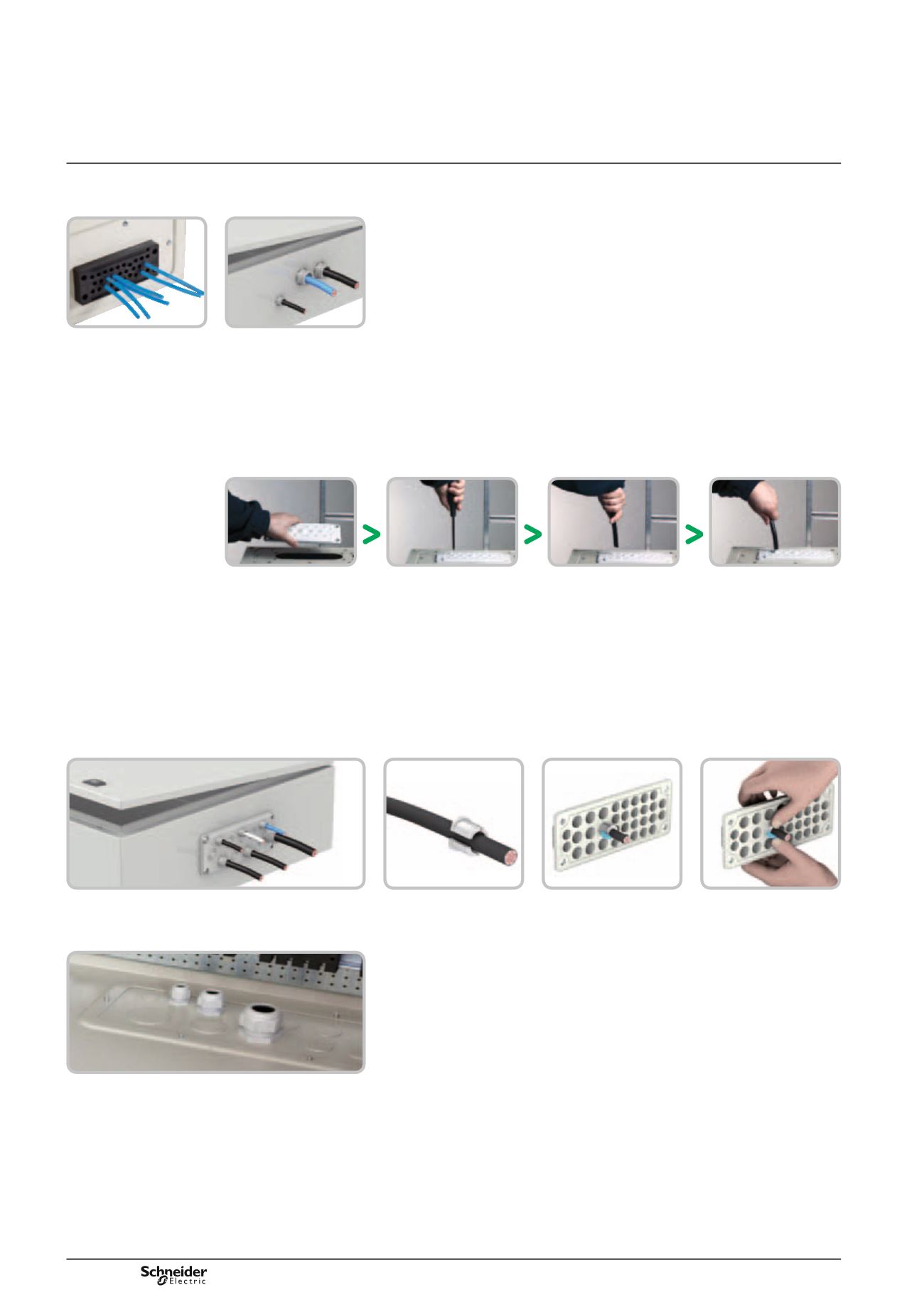

270
PB502706-68
PB502707-70
PB500023-38
PB502701-58
PB501704-35
PB501703-30
PB501702
Accessories
Cable management
Cable entries
Multiple
Push the membrane into
a standard hole.
Make a small hole in
the membrane.
Push the cable or tube
through the guide hole.
Key features when selecting a cable entry
1 -
Multiple cable entries or single cable entries
Your choice depends on:
b
b
The amount of cables going through the cable entry: generally for 3 or more
cables, choose a multiple cable entry. It will make your installation faster and
more economical.
In other words, your final bill will not necessarily be lower with single cable entries!
b
b
Flexibility of installation: for high flexibility, the multiple cable entry is
the right choice.
2 -
Entry cable material
b
b
Soft membranes
allow cables to be easily pushed through, but still offer a good
IP rating, protecting from moisture as well as physical intrusions. Cable retention
force, however, is lower than with other alternatives.
b
b
Hard plastic
needs specific tools to create the opening (drill or knife) but, thanks
to the cable gland, offers a very high retention force. Another use of this solution is
for public places, since the hard surface prevents objects being pushed in.
b
b
Combined:
the material of the cable entry plate is hard plastic, but the cable is
pushed through a soft membrane. In this case you have the advantages both of soft
membranes (easy and fast installation, flexibility) and hard plastic membranes
(high retention force, when using specific cable clamps).
3 -
Cable glands to be fitted
b
b
Some multiple cable entries require a cable gland to be able to retain the cables
and ensure the degree of protection.
Pull the cable or tube back
some 20 mm to lock it.
Single
PB502705
PB502704
PB502703
PB502702


















